
DART strikes its asteroid, in 1st planetary defense test
Posted by
Kelly Kizer Whitt
September 26, 2022
DART strikes an asteroid
DART – the Double Asteroid Redirect Test – has struck its target. DART is the first real test of our ability to defend ourselves from an asteroid on a collision course with Earth. For this test, DART targeted Didymos B – aka Dimorphos – a little asteroid moon just 525 feet (160 m) in diameter. It struck the little asteroid – hoping to nudge it slightly off-orbit – at 7:14 p.m. ET (23:14 UTC) on Monday, September 26, 2022.In a NASA press release late last night, the space agency explained:
The investigation team will now observe Dimorphos using ground-based telescopes to confirm that DART’s impact altered the asteroid’s orbit around Didymos. Researchers expect the impact to shorten Dimorphos’ orbit by about 1%, or roughly 10 minutes; precisely measuring how much the asteroid was deflected is one of the primary purposes of the full-scale test.
In other words, NASA is trying to deflect little Didymos B from its orbit.
This test will show if we’re ready to take on any threatening asteroids that could be headed our way.
What we saw, through DART’s eyes
NASA said DART had its first look at its target, the asteroid system Didymos and its moon Dimorphos (or Didymos B), back in July.On September 11, the LICIACube spacecraft, which witnessed the impact, successfully separated from DART.
And all the while DART was coming closer and closer to its target. DART carried a powerful camera, called DRACO. Four hours before impact, DART switched into autonomous control, using DRACO’s images to guide itself to crash onto Didymos B. As the spacecraft neared the asteroid, DRACO transmitted back to Earth closeups of Didymos B’s surface features, sharing its images at a rate of one per second, to provide a video-like experience for viewers.
If you watched (as many of us at EarthSky did), you saw Didymos B first appear as a separate tiny dot to the upper right of a brighter dot (Didymos A). Then, very quickly it seemed, DART came closer and closer … and Didymos A and Didymos B both resolved into actual rocky bodies in space. DART swept past Didymos A, and it left the frame. Then Didymos B got closer, and closer, and closer … then nothing.
Three minutes after DART struck the asteroid, LICIACube also flew past Didymos B, capturing images and video of a dust cloud wafting from the asteroid.
DART asteroid strike, in pictures
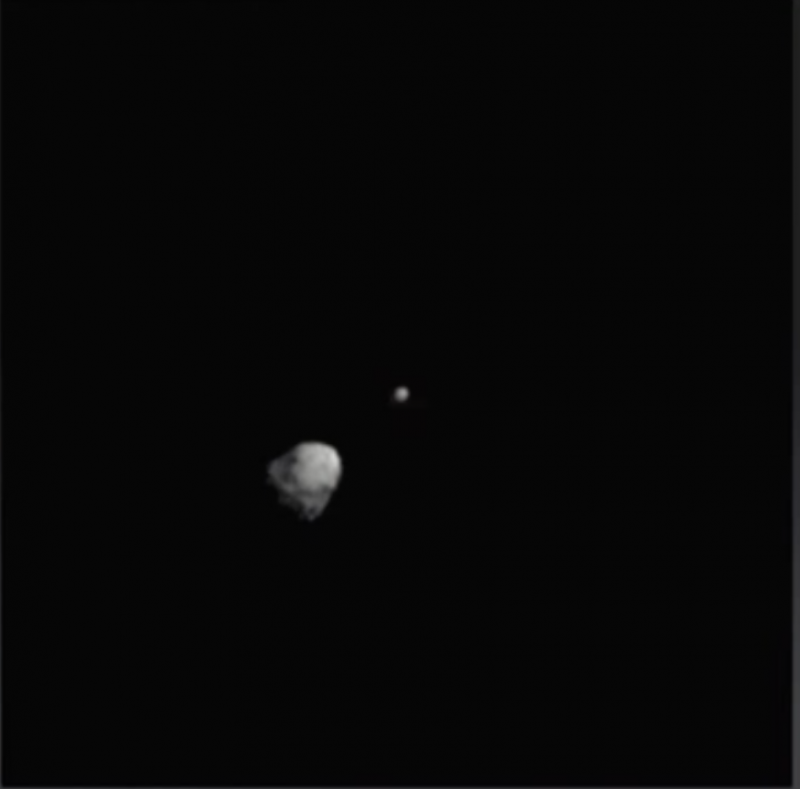
Through the eyes of DART as it’s approaching Didymos A and B. See the smaller asteroid to the upper right?

Through the eyes of DART as it’s approaching Didymos A and B. Zooming in fast now!
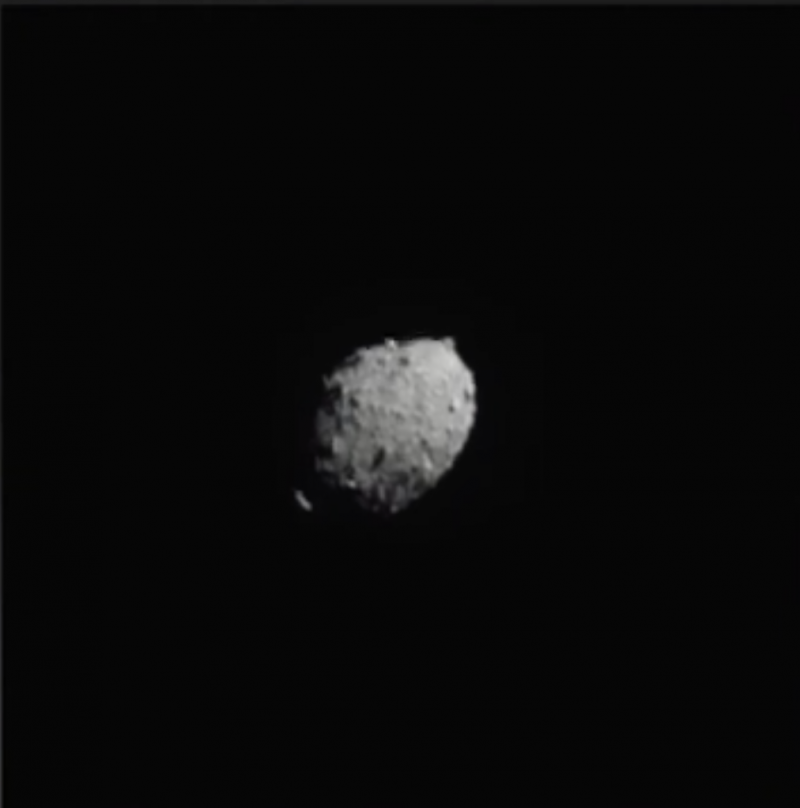
Through the eyes of DART … Didymos A is now entirely out of the frame.
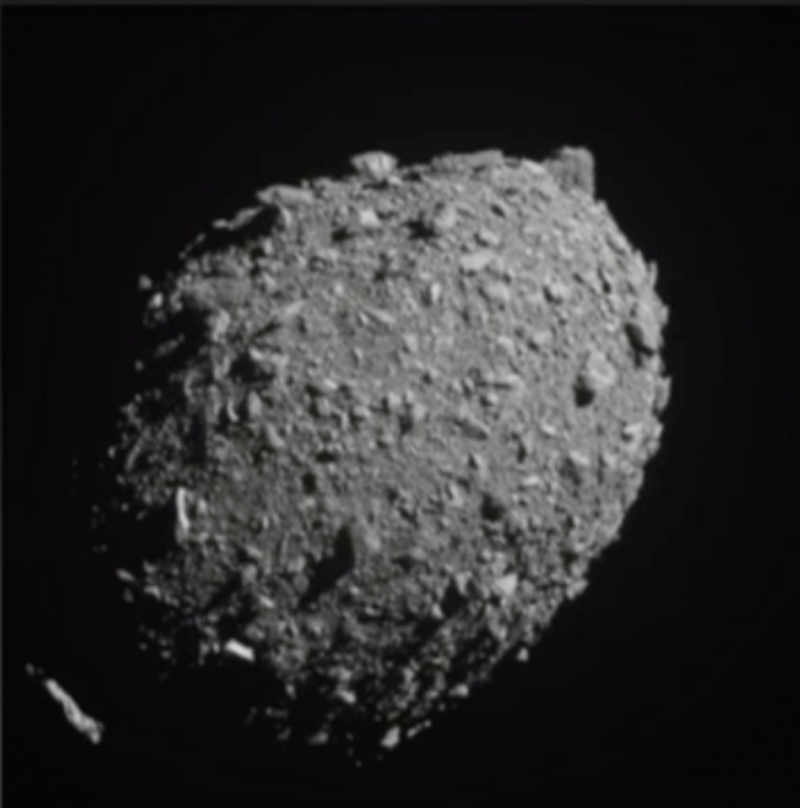
Through the eyes of DART … Didymos B.
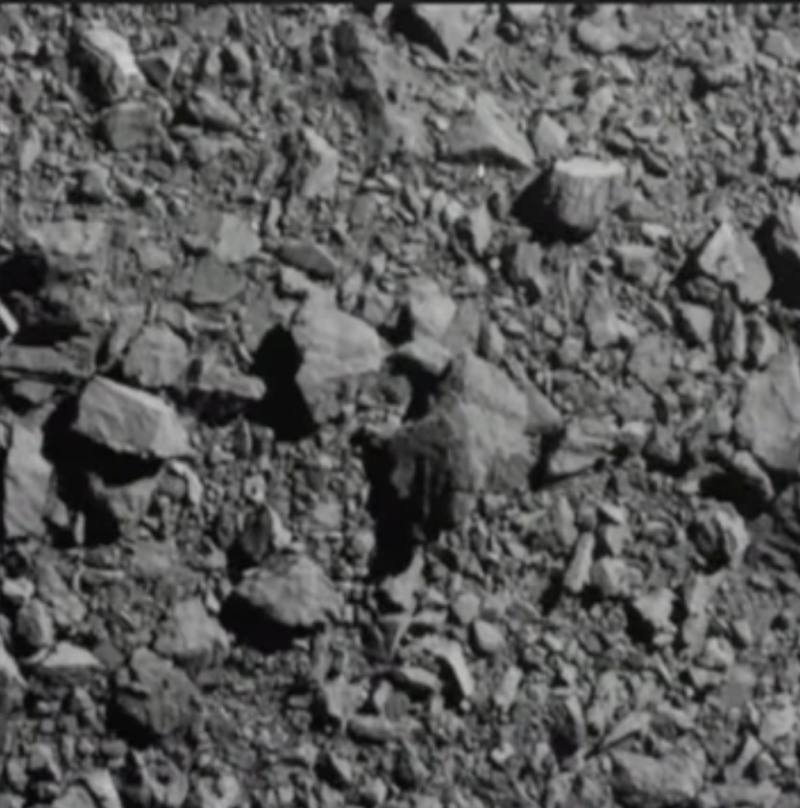 Through the eyes of DART … moments before impact.
Through the eyes of DART … moments before impact.The DART mission is only a test
Didymos B poses no threat to Earth. This little moonlet and its parent asteroid orbit the sun in an elliptical path that brings them close to Earth and then out past the orbit of Mars. Didymos B is the size of a typical asteroid that might threaten Earth. If DART is successful, it will be the world’s first test of technology to defend Earth against threats of an asteroid on a collision path with our world. As NASA said:When the impact occurred, Italy’s LICIACube was watching. LICIACube – or the Light Italian Cubesat for Imaging of Asteroids – was part of the DART mission and successfully separated from DART on September 11. The little spacecraft hopefully caught the impact plume, measured the impact site and observed the non-impacted hemisphere as well.This test will show that a spacecraft can autonomously navigate to a target asteroid and intentionally collide with it to change the asteroid’s motion in a way that can be measured using ground-based telescopes. DART will provide important data to help better prepare for an asteroid that might pose an impact hazard to Earth, should one ever be discovered.
You can learn much more about the DART mission, Didymos B, and any meteors that might result from the impact here.
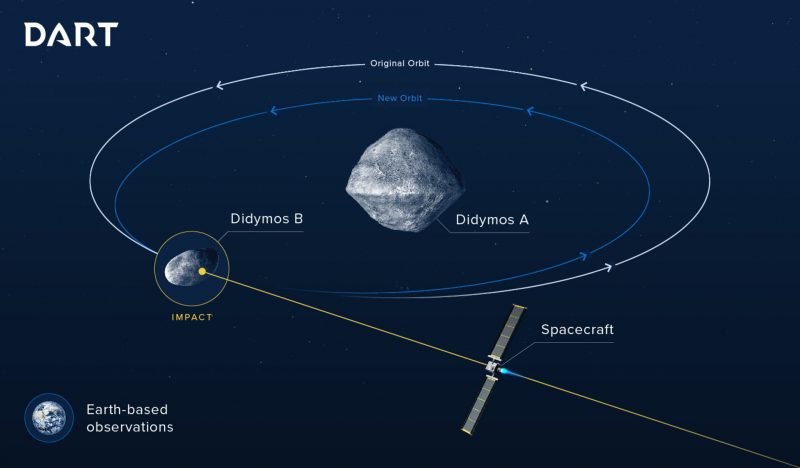
This graphic depicts what has now happened. DART reached the double asteroid system Didymos A and B on Monday, September 26. It steered itself into the smaller asteroid at a speed of about 4 miles per second (6.6 km/s). Image via ESA/ NASA/ Johns Hopkins APL/ Steve Gribben.
Bottom line: The DART spacecraft got closer and closer to its asteroid target – then struck it – on Monday, September 26, 2022. The strike happened at 7:14 p.m. ET (23:14 UTC). It was the first real test of our ability to defend ourselves from an asteroid on a collision course with Earth.
MORE HERE: https://earthsky.org/space/dart-impact-an-asteroid-on-september-26-2022/?utm_source=EarthSky+News&utm_campaign=2af73a0c57-EMAIL_CAMPAIGN_2018_02_02_COPY_01&utm_medium=email&utm_term=0_c643945d79-2af73a0c57-393775709&mc_cid=2af73a0c57&mc_eid=87f7e1dbd6
Thanks to: https://earthsky.org






 Sat Mar 23, 2024 11:33 pm by globalturbo
Sat Mar 23, 2024 11:33 pm by globalturbo

